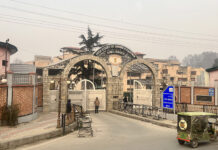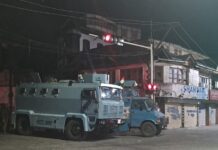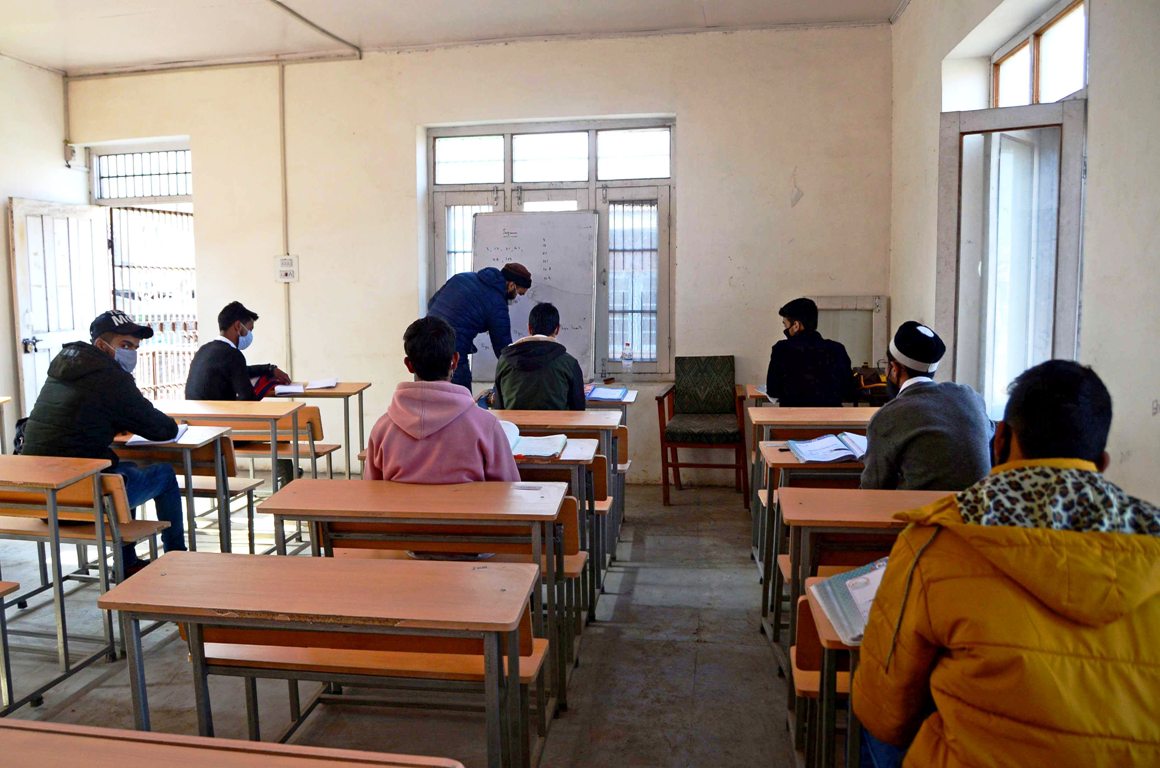SAFWAT ZARGAR
SRINAGAR
On a first sight at the sprawling mini-convention community centre at Sanat Nagar, men, women, boys and girls are seen sitting in circles, chatting and jostling near some makeshift tents. The scene makes one conjecture a marriage function being celebrated at the centre – there has been a growing trend of marriage celebrations in community halls across Srinagar city – but few steps inside the main building of the centre, the sight looks like mourning.
It was on Sunday night when Mohd Maqbool Tantray and his friends, during the prevailing chaos and confusion resulting from the floods in the state, decided on the accommodation and help of flood victims.
“We coordinated local boys of Rawalpora and Majeed Bagh and formed groups with particular focus,” Tantray says. While some youth began rescue work, others started collecting food items and medicines. With enough resources at hand, Tantray hadn’t got much success in getting space for the victims.
On Monday morning, Tantray and his friends entered Dr Sir Mohammad Iqbal Mini-Convention centre at Sanat Nagar, against the reluctance of the centre’s caretakers and guards. When the victims, cutting across every age, residence and gender, began pouring in towards the centre, Tantray’s friend, Shabir Ahmad Malik ordered the cooks (wazas) to light the wood for lunch.
“At present, more than 2000 people are served lunched by our volunteers, whose number is increasing day by day,” says Malik. “We even dispatch around 300-350 boxes of packed food, two times, to the people stranded on Srinagar-Muzaffarabad highway, daily,” he says.
“Many people come at lunch and dinner time, even though they are not camping here. There are lot of non-local labourers and workers who eat here,” Malik says.
“We serve them too.” According to the volunteers at Sanat Nagar centre, so far there has been no help or supply of any essential commodity from the government for the affected. “Whatever we have done, we have done ourselves. We have and are receiving relief from various districts particularly Budgam,” Tantray says.
“One relief truck is on the way all over from Kupwara.” At one instance, Deputy Commissioner Budgam, Manzoor Ahmad, brought a relief cavalcade of six trucks, but Tantray decided to turn the offer down. “We had enough stock of rice, biscuits, bread, pulses and water, so I told him to take that relief to some other needy place,” he says.
Tantray’s initiative is an extension of Welfare Committee Rawalpora – an informal organisation engaged in social and charity work. Another offshoot of the committee is Chinar foundation which pools all the medical aid coming from various places and then supplies them to dozens of relief camps. In the lawn of the community centre, a makeshift tent is housing half a dozen doctors and paramedics, the entrance to which is blocked by the rush of patients waiting for their turn and medicines. Few meters away, another tent run by a local NGO serves as a free clinic for gynecological problems.
“We don’t know how to thank them. They [Welfare Committee Rawalpora] have given us every facility,” says Abdul Rahman, a flood survivor.
Near the marbled receptionist counter of the centre, Ishfaq Ahmad Zargar, a businessman from Rawalpora, is in charge of distributing clothes to the survivors. In last six days, he has distributed thousands of donated clothes, he says. “We also purchased 1000 flip-flops and distributed them among the inmates,” Zargar says. Even though the list of around 300 families sheltering in the centre is pasted on the walls of the entrance, the number of flood victims navigating around the centre seems more than that.
Each volunteer at the centre has been assigned a specific task. Nobody ventures in other’s job-territory.
Jehangir, a local youth, has been assigned the role of cleaning and mopping bathrooms. “I am here since last six days. We switch our shifts alternatively,” he says while displaying bottles of Lizol and Phenyl.
When I entered the centre, the volunteers led by Mohd Shafi Dar, an employee of social welfare department and Tantray’s friend, were distributing toothbrushes and tongue cleaners to the flood affected. I saw many women, lined up near wash-basins brushing their teeth in the afternoon. While moving through various rooms of the centre, many people I talked to complained about absence of government, both, before as well as after the flood.
“Nobody came to rescue me and my three children,” says Afroza of Azad Basti, Natipora, one of the worst-hit areas by floods. “There is no government at all,” says Afroza, who was rescued on a rope-tied oil barrel-turned-boat by local youths on Monday. The flood affected victims are from various areas of Srinagar city, mostly Batamaloo, Tengpora, Padshahi Bagh, Jawahar Nagar and Natipora. Many of them are from places as far as Bandipora and Baramulla, who were renting in private apartments. The inmates are served breakfast, mid-morning tea, lunch, evening tea and dinner, daily.
During lunch and dinner, Tantray and his men are most busy. They don’t go home at all. Eight cooks who prepare the meals haven’t seen their loved ones for days. “We had to do it. If not we then who?” asks Tantray. “By the grace of Almighty, we have so much stock that we can feed people here for six months,” he claims. It is evening time and Tantray and his men are gearing up for serving tea.
“Helping people feeds our soul. What more do we need,” he says, while leaving towards the shed where hot salt-tea is brewing on embers.















